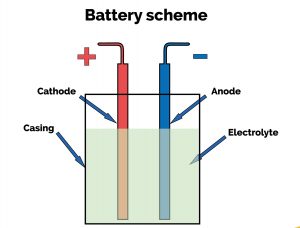Batteries
Do you have a smartphone? A tablet computer? Or just a simple camera? Do your family or friends? Maybe someone you know even has an electric car, or your local bus may be electric. It is hard to imagine a world without electricity, and increasingly, life without the very useful electronic devices almost all of us carry around with us, such as mobile phones.
More and more we rely on portable electronic devices, which are often wireless, and therefore require the use of batteries. As technology advances and becomes more complex it tends to require more power. This means that if batteries stayed the same, then they would not last as long, as the energy they store would be used up faster by increasingly energy-hungry devices. Fortunately, the understanding of physics, materials, and chemistry also advances, and helps us devise innovative new ways to tackle the increasing demand for power.
In recent years lithium has become an important element in the use of more sophisticated and more efficient batteries. The physical and chemical properties of lithium metal-anode-based batteries are highly suitable for this purpose (they have a high theoretical capacity, a low density, and a low electrochemical potential). However, as with all new technologies there are some difficulties. In particular, lithium dendrites (branch-like structures) form inside the battery, on the metal anode. This causes problems by reducing the efficiency of the battery as the dendrites consume the electrolyte. Also they cause an increased risk of dangerous electrical short-circuits.
At IT4Innovations National Supercomputing Centre, the Czech Republic, the research team of Dominik Legut is investigating potential solutions to these problems. Their primary strategy investigates the potential of protective 2D film materials like graphene, phosphorene, silicane, etc. The ultimate goal is to design 2D materials that are strong enough to hinder dendrite growth whilst still allowing Li ion diffusion. Defected graphene and similar 2D materials have this potential.
The second approach investigates the use of lithium alloy materials, such as with tin (Sn-Li), as protective films to mitigate the effect of certain problems. Using the supercomputing resources they carry out complex mathematical calculations to determine the effect of these experimental interventions on the performance characteristics of the batteries.
Although this research is still in very early theoretical stages, it will have a profound impact on the ability of humankind to efficiently manage precious energy resources in the future. Advancing technology, including supercomputing, makes this research possible, and greatly speeds it up.


